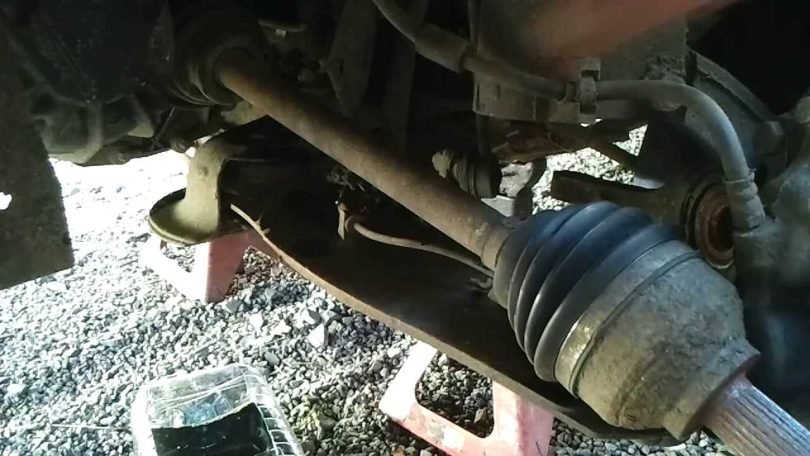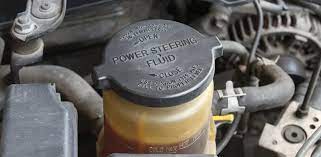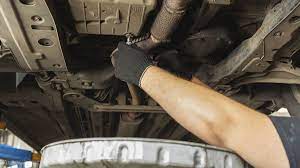Top secret to save your car driveshaft is important to know. The Driveshaft is one of the essential parts of a car. Have you ever experience driveshaft pull- off before? You could remember how embarrassing and despondent that could be on the way either to work, or to catch up an appointment or to an event. Therefore, in this article we shall be discussing some ways you can save your driveshaft from not getting bad very soon and some symptoms of a bad shaft. Remember one of the simplest and most important parts of a vehicle is the driveshaft. It is responsible for transferring the output of the transmission to the axles; it is a shaft that drives the vehicle. Though it has a basic function, it plays an incredibly crucial role in vehicle operation and is the link between a revving engine and a moving car. But before we can diagnose driveshaft problems, we need to understand some basic principles. There are things you should do to save your shaft as a driver or the owner of the vehicle. Whether your shaft is good or not there are some measures you need to take that can save drive-shaft and avoid it pulling out. Do you know that careful driving saves your car a whole lot? A careful driving contributes to a long lasting vehicle. A careful driver takes time to drive in a pot hole or in a rough road. Rough driving is before a crash. This carefulness saves the car for you. Steering Turning has a lot to do with your driveshaft. Have you experience turning your steering to the end and hear a very sharp noise from your car leg? Such turning is capable of pulling your shaft off especially when the drive shaft is getting bad or bad already. This kind of turning stretches the shaft beyond its limit. Therefore, it is necessary that you don’t turn your steering to the full when making u-turn.
Read more: Top Signs of Power Steering Failure
Improves the Range of Motion of Your Car Wheels.
Imagine that if your car wheels are connected to the transmission by a rigid metal instead of a drive shaft. When your wheels go over a bump, the wheels will shifts upward but not the transmission. With enough force, it will snap the rigid metal in half. That’s precisely why we have drive shaft. It improves flexibility and gives the car wheels a greater range of motion to work with.
Transfers Rotational Energy from the Transmission to the wheels.
When you crank your engine, the engine combusts the petrol-air mixture. The heat energy gets converted into kinetic energy which pushes the car engine pistons up and down. Subsequently, the car transmission then harvests this engine power and converts them into rotational energy through a differential. When the differential rotates, it passes the rotation through the drive shaft and then to your car wheels. Finally, as your car wheels start to roll, your car moves forward. As you can see, drive shaft is a very important part of your car. If you remove it, your car won’t move! That’s why we call it… drive-shaft, because it’s a flexible shaft that drives the wheel.
Read More: When to Change Arm Bushing in Your Car and How to do it
1) Vibrations
If you’re driving the vehicle and you feel a lot of harsh vibrations coming from under it, then your drive shaft may be in trouble. This is usually the first symptom that people recognize when there is a drive shaft problem. The vibrations are likely due to worn out bushings of the drive shaft. These bushings are what normally keep the drive shaft from vibrating in the first place. If the problem is not fixed soon, the vibration will get more severe. It will get so bad that your passengers will be able to feel it too. The worst part is that other drive train components can also be affected and damaged. Note that vibrations that increase with speed may mean your tires need to be balancing. This should be done regularly. Check your owner’s manual for the manufacturer’s recommendation.
2) Clunking Noise
When you accelerate your vehicle, do you hear a clunking noise? How about when you put the vehicle into reverse, or even into drive? If you hear clunking noises in any of these cases, then it could mean your drive shaft has an issue and should be promptly inspected. Often, this is a common symptom of a bad slip yoke.
3) Squeaking Noise
The most common point of failure with a driveshaft assembly is the U-joints. The U-joints use bearings inside to keep the joint moving freely. Over time, these bearings will wear out and the u-joints will need to be replaced. You can often tell that these are going bad when you hear popping and clunking coming from the driveline. If you’re driving and you hear a squeaking noise that is consistently coming from underneath your vehicle, then it is a sign that your drive shaft could be faulty. It could possibly be out of balance or some other part of it could be worn out.
Read more: Tips on What Kill a Car And its Remedy
4) Universal Joint Movement
If the U-joint of your drive shaft rotates too fast or fails to rotate, then it’s a problem with your drive shaft. The cap seals of the bearings could have rust on them. Either that or the u-joint itself is not stable. You’ll need to have your drive shaft replaced because you can’t drive your vehicle in this condition.
5) Difficulty Turnin
Driveshaft problems can make it difficult to control the vehicle’s ability to turn. If you feel hesitation or resistance when turning, or difficulty maneuvering in and out of parking spaces, it could be a sign that your driveshaft is on its way out. If you try to make a turn with your vehicle and the wheels don’t turn immediately or they hesitate, then you have an issue with your drive shaft. The tires will have a lot of resistance which you’ll be able to feel as you try to make a turn. Obviously, this is a serious issue and it needs to be looked at right away. If your steering wheel is simply difficult to turn, you may need to take a look at the power steering pump.
While it is usually possible to drive with a bad drive shaft, it’s usually not very wise to do it for long. If part of the drive shaft were to snap, you’ll lose power to that axle in the best case scenario. The drive shaft may fall and get wedged between the ground and your vehicle, restricting forward movement.







